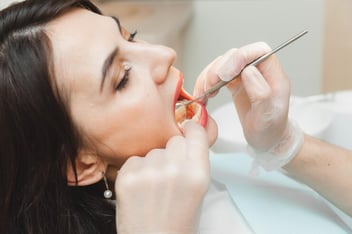Dos and Don'ts After Wisdom Tooth Extraction: Expert Tips for Optimal Healing
Undergoing a wisdom tooth extraction is a common dental procedure that many individuals face. While the process itself is typically straightforward, the recovery period is crucial to ensure optimal healing and prevent complications. Understanding the best practices for post-extraction care can significantly enhance your recovery experience. In this blog post, we will discuss the essential dos and don'ts after a wisdom tooth extraction, providing you with expert tips for a smooth and speedy recovery.
The Importance of Post-Extraction Care
After a wisdom tooth extraction, your mouth needs time to heal. Proper care during this period is vital to avoid infections, dry socket, and other complications. Following your dentist's instructions and adhering to the recommended guidelines will help you recover more comfortably and efficiently.
Dos After Wisdom Tooth Extraction
- Follow Your Dentist’s Instructions: Your dentist will provide you with specific instructions tailored to your needs. Follow these guidelines closely for the best results.
- Rest and Relax: Take it easy for the first few days after your extraction. Avoid strenuous activities that could increase blood pressure and cause bleeding in the extraction site.
- Apply Ice Packs: Use ice packs on your cheeks for the first 24 hours to reduce swelling. Apply the ice for 20 minutes on and 20 minutes off.
- Take Prescribed Medications: Your dentist may prescribe pain relievers and antibiotics. Take these medications as directed to manage pain and prevent infection.
- Maintain Oral Hygiene: Keep your mouth clean to prevent infection. Gently rinse with warm salt water 24 hours after the extraction, but avoid vigorous swishing. Brush your teeth carefully, avoiding the extraction site.
- Stay Hydrated: Drink plenty of fluids to stay hydrated. Opt for water and avoid beverages that could irritate the extraction site, such as alcohol or carbonated drinks.
- Eat Soft Foods: Stick to a diet of soft foods such as yogurt, mashed potatoes, and smoothies for the first few days. Gradually reintroduce solid foods as your healing progresses.
- Keep Your Head Elevated: When lying down, prop your head up with pillows to reduce swelling and bleeding.
- Attend Follow-Up Appointments: Make sure to attend any scheduled follow-up appointments with your dentist to monitor your healing progress.
Don'ts After Wisdom Tooth Extraction
- Avoid Smoking: Smoking can delay healing and increase the risk of complications such as dry socket. Refrain from smoking for at least 72 hours after the extraction.
- Don’t Use Straws: The suction created by using a straw can dislodge the blood clot in the extraction site, leading to dry socket. Avoid using straws for at least a week.
- Don’t Spit Forcefully: Spitting forcefully can also dislodge the blood clot. If you need to rinse your mouth, do so gently.
- Avoid Hard, Crunchy Foods: Hard and crunchy foods can irritate the extraction site and impede healing. Stick to soft foods until your mouth has healed.
- Don’t Drink Alcohol: Alcohol can interfere with the healing process and interact negatively with prescribed medications. Avoid alcohol for at least 72 hours post-extraction.
- Avoid Hot Beverages and Foods: Hot beverages and foods can dissolve the blood clot and delay healing. Opt for lukewarm or cool foods and drinks instead.
- Don’t Touch the Extraction Site: Avoid poking or prodding the extraction site with your tongue, fingers, or any objects. This can introduce bacteria and cause infection.
- Don’t Ignore Pain or Swelling: While some discomfort is normal, excessive pain or swelling could indicate a problem. Contact your dentist if you experience severe symptoms.
Managing Common Post-Extraction Symptoms
After a wisdom tooth extraction, you may experience several common symptoms. Here’s how to manage them effectively:
- Swelling: Swelling is a normal part of the healing process. Continue applying ice packs to reduce it. Swelling usually peaks 48 hours after the extraction and then gradually subsides.
- Pain: Pain can be managed with prescribed medications or over-the-counter pain relievers. If the pain is severe or persistent, contact your dentist.
- Bleeding: It’s normal to experience some bleeding immediately after the extraction. Bite down gently on gauze pads to control bleeding. If bleeding persists, replace the gauze as needed and contact your dentist if it doesn’t stop.
- Bruising: Bruising may appear on your cheeks and neck. This is normal and should fade within a few days.
- Difficulty Opening Mouth: You may experience stiffness in your jaw muscles. Gentle jaw exercises can help improve mobility over time.
When to Contact Your Dentist
While most symptoms are part of the normal healing process, certain signs may indicate complications. Contact your dentist in Oxnard, California, if you experience any of the following:
- Persistent or severe pain that doesn’t improve with medication
- Excessive bleeding that doesn’t stop after applying pressure
- Swelling that worsens after 48 hours
- Fever or chills
- Pus or discharge from the extraction site
- Difficulty breathing or swallowing
Conclusion
At Clove Dental, we are committed to providing comprehensive dental care and ensuring our patients’ optimal recovery after procedures like wisdom tooth extraction. By following these dos and don’ts, you can significantly enhance your healing process and reduce the risk of complications.
If you have any concerns or need further assistance during your recovery, don’t hesitate to reach out to Clove Dental. Our experienced team is here to support you every step of the way. Schedule your follow-up appointment with your trusted dentist in Oxnard, California, today and take the next step towards a healthy, pain-free smile.
.png?width=80&height=80&name=Clove%20Dental%20White%20Small%20(28).png)

-1.jpg?width=352&name=image%20(27)-1.jpg)

